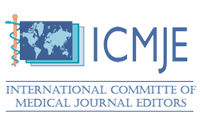Septorinoplasti Olgularında Sevofluran İnhalasyon Anestezisi ve Propofol İle Uygulanan Total İntravenöz Anestezinin Postoperatif Boğaz Ağrısı ve Bulantı-Kusma Açısından Karşılaştırılması
Meral Erdal Erbatur, Andac Dedeoglu, Okan Andic, Resit Saruhan, Recep Gokce, Osman Uzundere, Erhan Gokcek, Cem Kivilcim KacarSağlık Bilimleri Üniversitesi Diyarbakır Gazi Yaşargil Eğitim ve Araştırma Hastanesi, Anesteziyoloji ve Reanimasyon Kliniği, Diyarbakır, TürkiyeAmaç: Bu araştırmanın amacı, genel anestezi uygulanan elektif septorinoplasti vakalarında intraoperatif sevofluran kullanılarak yapılan inhalasyon anestezisi ve propofol ile yapılan total intravenöz anestezinin boğaz ağrısı ve postoperatif bulantı-kusma açısından karşılaştırılmasıdır.
Yöntem: Bu prospektif gözlemsel çalışmaya toplam 52 hasta dahil edildi. Anestezi indüksiyonunu takiben Grup 1’e (n=26) sevofluran inhalasyonu ve remifentanil infüzyonu; Grup 2’ye (n=26) ise intravenöz propofol ve remifentanil infüzyonu başlandı. Ameliyat sonunda bulantı-kusma varlığı, boğaz ağrısı varlığı ve şiddeti, ekstubasyon süreleri, ek analjezik ve antiemetik verilen hasta sayısı kaydedildi.
Bulgular: Anestezi sonrası bakım ünitesinde, postoperatif 2., 6. ve 12. saatlerde Grup 2’de daha az boğaz ağrısı mevcuttu (p değerleri sırasıyla: 0,014; 0,004; 0,015; 0,044). Postoperatif ek analjezik uygulanan hasta sayısı Grup 1’de 19 iken Grup 2’de 9 olarak tespit edildi (p=0.005). Postoperatif bulantı-kusma açısından gruplar arasında herhangi bir fark olmadığı saptandı.
Sonuç: Septorinoplasti operasyonlarında propofol ile yapılan total intravenöz anestezinin sevofluran kullanılarak yapılan inhalasyon anestezisine kıyasla daha az boğaz ağrısı ve postoperatif analjezik kullanımına neden olduğu saptanmıştır.
Anahtar Kelimeler: Boğaz ağrısı, bulantı ve kusma, propofol, septorinoplasti, sevofluran, TİVA
Comparison of Sevoflurane Inhalation Anesthesia and Total Intravenous Anesthesia with Propofol in Terms of Postoperative Sore Throat and Nausea/Vomiting in Septorhinoplasty Cases
Meral Erdal Erbatur, Andac Dedeoglu, Okan Andic, Resit Saruhan, Recep Gokce, Osman Uzundere, Erhan Gokcek, Cem Kivilcim KacarHealth Sciences University Diyarbakir Gazi Yaşargil Training and Research Hospital, Anesthesiology and Reanimation Clinic, Diyarbakir, TurkeyObjective: The objective of this prospective observational study was to compare the use of inhalation anesthesia with sevoflurane and total intravenous anesthesia with propofol in terms of sore throat and postoperative nausea/vomiting in elective septorhinoplasty cases under general anesthesia.
Methods: This study was conducted using the data of 52 participating patients. Following induction of anesthesia, Group 1 (n=26) received sevoflurane inhalation and remifentanil infusion, while Group 2 (n=26) received intravenous propofol and remifentanil infusion. The presence of nausea/vomiting, the presence and severity of sore throat, extubation times, and the number of patients who were given additional analgesics and antiemetics were recorded at the end of operation.
Results: Within post-anesthesia care unit, Group 2 had less sore throat at the postoperative 2nd, 6th, and 12th h (p values, respectively: 0,014; 0,004; 0,015; 0,044. The number of patients receiving additional analgesics in the postoperative period was 19 in Group 1 and 9 in Group 2 (p=0.005). The results of the groups in terms of postoperative nausea/vomiting were similar.
Conclusion: In septorhinoplasty operations, total intravenous anesthesia with propofol resulted in less sore throat and reduced postoperative analgesic use compared to inhalation anesthesia with sevoflurane.
Keywords: Sore throat, nausea and vomiting, propofol, septorhinoplasty, sevoflurane, TIVA
Makale Dili: İngilizce
(1044 kere indirildi)












